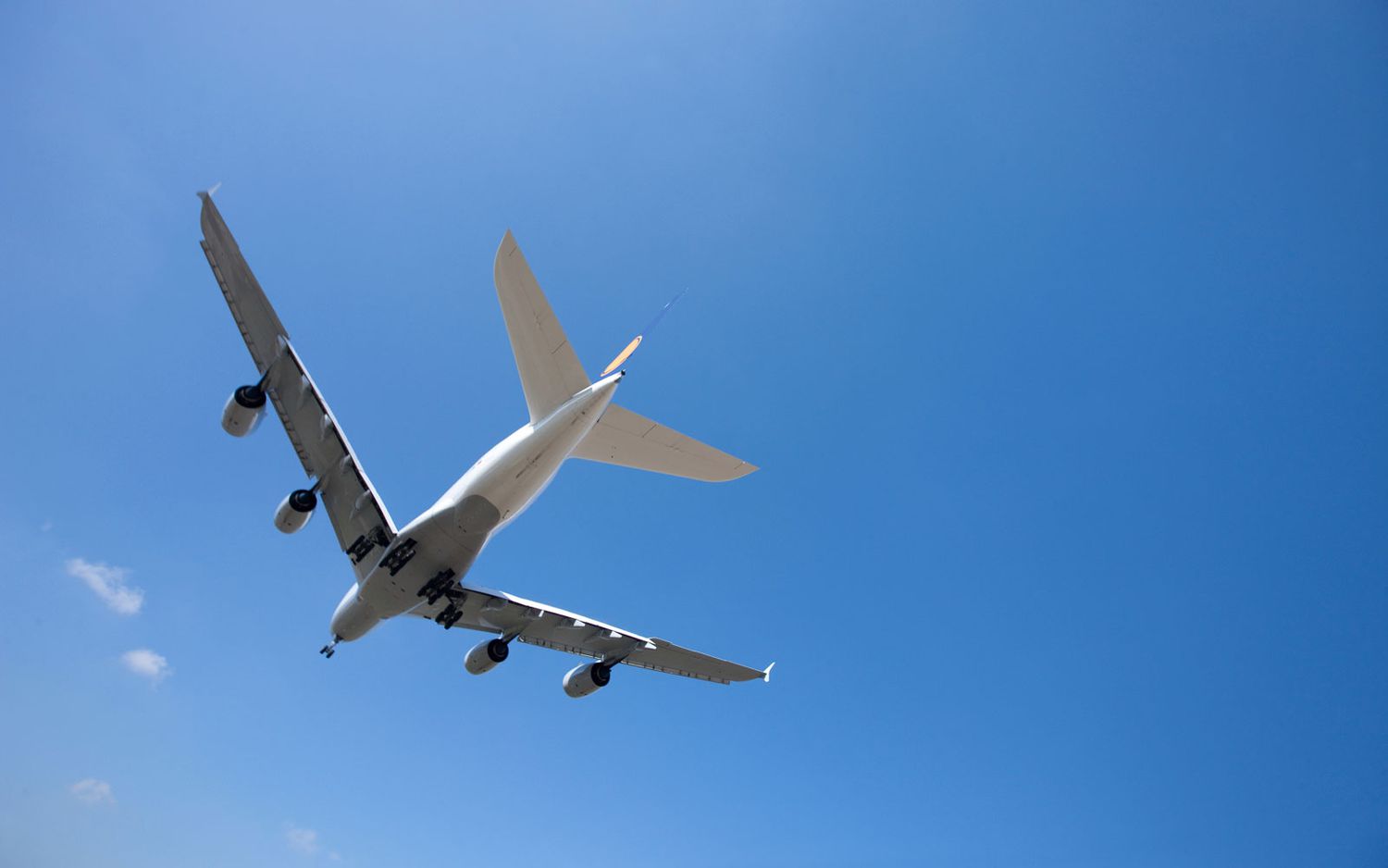
Airplanes have revolutionized the way we travel, connect with the world, and experience new destinations. These marvels of engineering have a rich history and continue to captivate the imagination of people worldwide. In this article, we'll explore 21 fascinating facts about airplanes that showcase their incredible capabilities, technological advancements, and impact on global transportation.
From the early pioneers of flight to the cutting-edge aircraft of today, the evolution of airplanes has been nothing short of extraordinary. We'll delve into the impressive statistics, remarkable achievements, and lesser-known aspects of these flying machines. Whether you're an aviation enthusiast, a frequent traveler, or simply curious about the world of aviation, these facts will provide an intriguing glimpse into the fascinating world of airplanes.
So buckle up and prepare for takeoff as we embark on a journey through the skies to uncover the most captivating and surprising facts about airplanes. Let's soar through the clouds and discover the incredible feats and innovations that have shaped the history and future of aviation.
Key Takeaways:
- Airplanes have revolutionized travel, from the Wright brothers’ historic flight to the advanced technology of today. They connect people and cultures across the globe, shaping the world we live in.
- The incredible feats of aviation, from supersonic flights to humanitarian aid efforts, showcase the profound impact of airplanes on our lives and the world. They embody human ingenuity and progress.
The Wright brothers achieved the first powered, sustained, and controlled airplane flight in 1903.
On December 17, 1903, Orville and Wilbur Wright made history with their Flyer, which flew for 12 seconds over a distance of 120 feet at Kitty Hawk, North Carolina. This monumental achievement marked the birth of modern aviation.
The world's largest passenger airplane is the Airbus A380.
With a wingspan of 262 feet and the capacity to carry over 500 passengers, the Airbus A380 is a marvel of engineering and design. Its impressive size and advanced features redefine the possibilities of air travel.
The Boeing 747, known as the "Queen of the Skies," has been a symbol of long-haul flights for decades.
Since its debut in 1968, the Boeing 747 has captured the imagination of travelers worldwide. Its distinctive hump and remarkable performance have solidified its status as an aviation icon.
The Concorde was the first supersonic passenger-carrying commercial airplane.
This groundbreaking aircraft could travel at twice the speed of sound, allowing passengers to experience supersonic flight. The Concorde represented a leap forward in aviation technology and luxury travel.
The Boeing 787 Dreamliner incorporates advanced composite materials, making it lighter and more fuel-efficient.
With its innovative design and state-of-the-art features, the Boeing 787 Dreamliner sets new standards for sustainability and passenger comfort. Its use of composite materials enhances performance while reducing environmental impact.
The Blackbird SR-71 holds the record for the fastest air-breathing manned aircraft.
This extraordinary reconnaissance aircraft reached speeds exceeding Mach 3, demonstrating unparalleled engineering prowess and pushing the boundaries of aeronautical achievement.
The "Miracle on the Hudson" showcased the remarkable skills of Captain Chesley "Sully" Sullenberger.
In 2009, Captain Sullenberger successfully executed an emergency water landing of US Airways Flight 1549 on the Hudson River, saving all 155 passengers and crew. His quick thinking and expertise averted a potential disaster.
Airplanes are equipped with black boxes, which record crucial flight data and cockpit conversations.
These vital devices aid in accident investigations, providing valuable insights into the circumstances surrounding aviation incidents. Their durability enables them to withstand extreme conditions, aiding in the retrieval of critical information.
The International Space Station (ISS) serves as a platform for scientific research and international collaboration.
Supported by resupply missions from cargo airplanes, the ISS exemplifies the potential of aerospace technology in advancing scientific exploration and fostering global partnerships.
The "sound barrier" refers to the abrupt increase in aerodynamic drag near the speed of sound.
Breaking the sound barrier was a significant milestone in aviation, leading to advancements in supersonic flight and shaping the development of high-performance aircraft.
Airplanes have played a pivotal role in humanitarian aid and disaster relief efforts.
During natural disasters and humanitarian crises, airplanes facilitate the rapid transportation of essential supplies, medical personnel, and humanitarian aid to affected regions, demonstrating their vital role in global relief efforts.
The Boeing B-52 Stratofortress has been in service with the United States Air Force since the 1950s.
This long-range, heavy bomber has demonstrated remarkable endurance and adaptability, serving as a strategic asset in military operations and showcasing the enduring legacy of aviation technology.
The "pilot's handshake" refers to the tradition of a firm handshake between the captain and first officer before a flight.
This symbolic gesture signifies trust, teamwork, and a shared commitment to safety, reflecting the professional camaraderie essential to aviation operations.
The development of fly-by-wire technology has revolutionized aircraft control systems.
Fly-by-wire systems enhance maneuverability and safety by utilizing electronic signals for flight control, ushering in a new era of precision and responsiveness in aviation.
The "jet age" marked a transformative shift in air travel, enabling faster and more efficient transportation.
The advent of jet-powered airplanes revolutionized commercial aviation, offering unprecedented speed and range, thus reshaping global connectivity and travel experiences.
The "area rule" concept, pioneered by engineer Richard Whitcomb, revolutionized aircraft design by reducing drag.
This aerodynamic principle, which led to the distinctive "Coke bottle" shape of certain aircraft fuselages, significantly improved aircraft performance and efficiency.
The "glass cockpit" features advanced electronic flight instrument displays, enhancing situational awareness for pilots.
Modern airplanes utilize glass cockpits, replacing traditional analog gauges with digital displays that provide comprehensive flight information, contributing to enhanced safety and operational efficiency.
The "angle of attack" refers to the angle between an aircraft's wing and the oncoming air.
Understanding and managing the angle of attack is crucial for maintaining optimal lift and controlling the aircraft's flight characteristics, underscoring its significance in aviation operations.
The "black box" is actually painted bright orange for high visibility.
Contrary to its name, the flight data recorder and cockpit voice recorder are coated in vibrant orange paint, making them easier to locate in the event of an aviation incident, thus aiding in their swift recovery and analysis.
The "boneyard" serves as a storage and maintenance facility for retired airplanes.
These vast aircraft storage facilities, such as the Davis-Monthan Air Force Base in Arizona, house retired aircraft awaiting potential reactivation, dismantling, or recycling, reflecting the lifecycle of aviation assets.
The "21 Best Facts About Airplanes" encapsulate the remarkable evolution and enduring impact of aviation on the modern world.
From pioneering achievements to technological innovations, airplanes continue to shape global connectivity, transportation, and exploration, embodying the spirit of human ingenuity and progress.
By incorporating these fascinating facts, we gain a deeper appreciation for the incredible feats of aviation and the profound influence of airplanes on our lives and the world at large.
Conclusion
In conclusion, airplanes have revolutionized the way we travel and connect with the world. From their fascinating engineering to their pivotal role in shaping global transportation, airplanes continue to inspire awe and wonder. The evolution of aviation technology has not only made air travel safer and more efficient, but it has also opened up new frontiers for exploration and commerce. As we look to the future, the ongoing advancements in aircraft design and propulsion promise to further redefine our relationship with the skies. With a blend of innovation, engineering prowess, and a touch of magic, airplanes remain a symbol of human ingenuity and the boundless possibilities that await us in the endless expanse above.
FAQs
Q: What is the history behind the invention of airplanes?
A: The concept of flight has fascinated humans for centuries, but the Wright brothers are credited with achieving the first powered, sustained, and controlled airplane flight on December 17, 1903.
Q: How do airplanes stay in the air?
A: Airplanes stay aloft due to the principles of aerodynamics. The wings are designed to create lift, which counteracts the force of gravity and allows the airplane to remain airborne.
From the earliest days of flight to modern marvels, airplanes have captured our imagination. If you enjoyed learning about these incredible machines, why not explore more fascinating aviation topics? Discover the thrilling world of paper airplane contests, where creativity and aerodynamics collide. Curious about the altitudes planes reach? We've got you covered with insights into how high they soar. And for fans of classic comedy, don't miss our collection of hilarious facts about the beloved movie sequel, Airplane II. Keep your love of aviation alive by diving into these captivating articles!
Was this page helpful?
Our commitment to delivering trustworthy and engaging content is at the heart of what we do. Each fact on our site is contributed by real users like you, bringing a wealth of diverse insights and information. To ensure the highest standards of accuracy and reliability, our dedicated editors meticulously review each submission. This process guarantees that the facts we share are not only fascinating but also credible. Trust in our commitment to quality and authenticity as you explore and learn with us.


